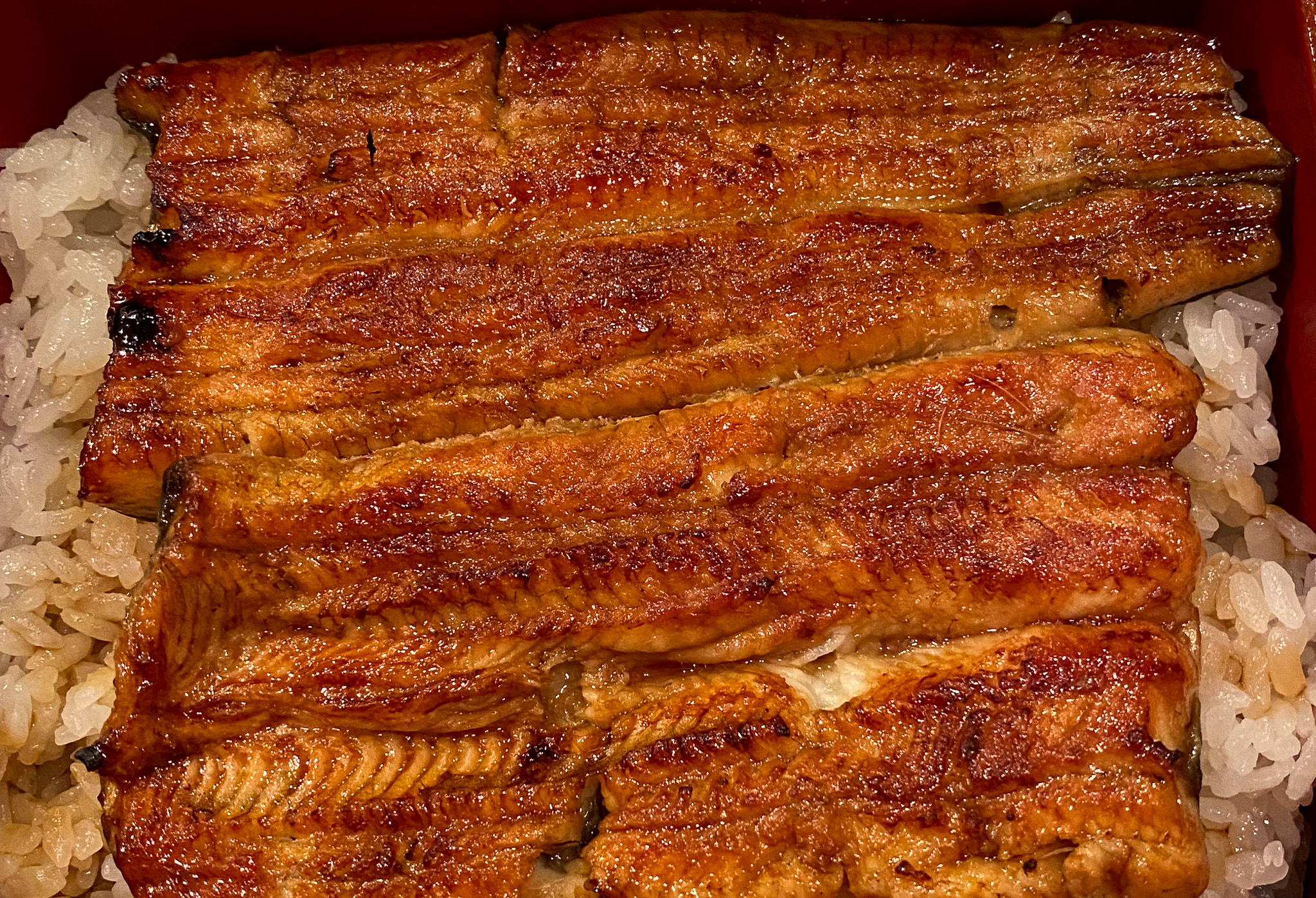
Interview with ceramic artist Mad (Shibuya, Tokyo)
Share
I met Mad, who makes Kyobachi pottery in Shibuya, Tokyo.
For about three hours, he took his time to talk about everything from his dramatic life that led him to pottery to the creation of his masterpiece, Babel. Please read on to the end.
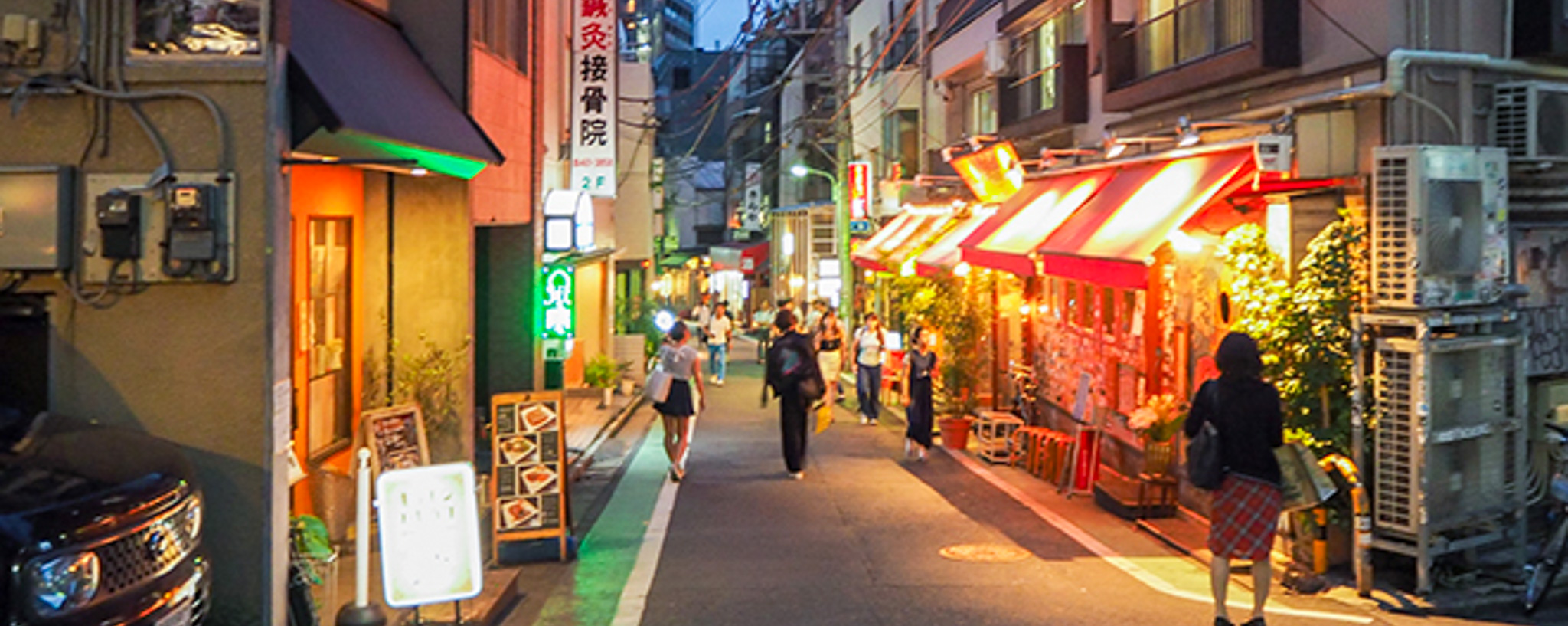
Please tell us about your journey to becoming a potter.
I was born in Ota Ward, Tokyo. My mother is half Korean and my father is half Japanese. My parents divorced when I was little, and I was raised by my mother. I remember that when I visited my grandmother's family home in Miyagi, all of my relatives were Korean. I was in juvenile detention twice as a teenager, and spent most of my 20s and early 30s in prison. I spent half my life in shit, saw a lot of things that "no one needs to see," and experienced rock bottom on a different level than what most people would call rock bottom. During my sentence, I worked out my body to be rock hard, doing 500 push-ups every day.
I was around 32 when I got out of prison. I worked at a demolition company where a junior colleague worked, and also worked for another company. Looking around me, everyone was getting married, building their own homes, having families, and having money. But it was a very negative restart for me. I was late in life, so I was desperately trying to live every day. That's when I discovered mixed martial arts. After I turned 30, I started competing in "underground fighting" called Outsider. I was doing a job where I was destroying people and destroying things (lol). It was destroying my own body, too...
Eventually I got sponsors and started holding my own martial arts events, which led to me now running a nail salon in Shibuya. Through martial arts my name became known to the public and people started asking me to shake their hands on the street, but before I knew it, I was doing martial arts after I turned 40 and young, strong fighters were coming on, and I started to get slower and lose.
On a different note, after the Great East Japan Earthquake, I started volunteering by providing supplies to disaster victims and holding martial arts events for children who had grown up in institutions and had been abused. It's not because I want to atone for the bad things I did in the past, but because I understand the importance of supplies and want to help people. I've been doing this for 12 years now, and I've continued this volunteer work. Recently, when Shizuoka Prefecture was hit by flooding, I converted most of the profits from my "Kyoubachi" sales into supplies and brought them there.
I continued to fight in the ring even after I turned 40, but eventually retired from martial arts. It was my purpose in life, so if I retired, I would lose it. I thought every day about finding a new purpose in life. I tried new things, such as working as a personal trainer, making use of my physical abilities, but I discovered a new purpose in life, or rather a hobby. It was plants. I started growing agave.
Gradually, I started importing agave and selling them through Instagram Live under the name Mad plants, becoming an "agave importer and seller." A lot of customers I met around that time bought agave from me. Naturally, I started looking for a cool pot to put the agave in, and found that I couldn't buy pots made by top ceramic artists, or that they were being sold at premium prices. Then, I suddenly thought, "Wouldn't it be great if I could grow agave in a pot I made myself?"
On September 1, 2021, I started working with clay using an electric potter's wheel and clay that I bought online. People around me looked at me half-laughing at me for suddenly starting pottery (laughs). I never imagined I would create something on my own in my life, so I learned about chrysanthemum kneading and clay killing for the first time through books (laughs). For the first month, I spent my days watching pottery YouTube videos and making and recreating things with clay that were written in pottery books. My pottery teacher is YouTube (laughs).
Before I knew it, I was completely immersed in pottery, and it became my new purpose in life... Now, I run a nail shop while also working as a potter. I spend about 90% of my time as a potter, and I make pottery almost every day, including New Year's Day.
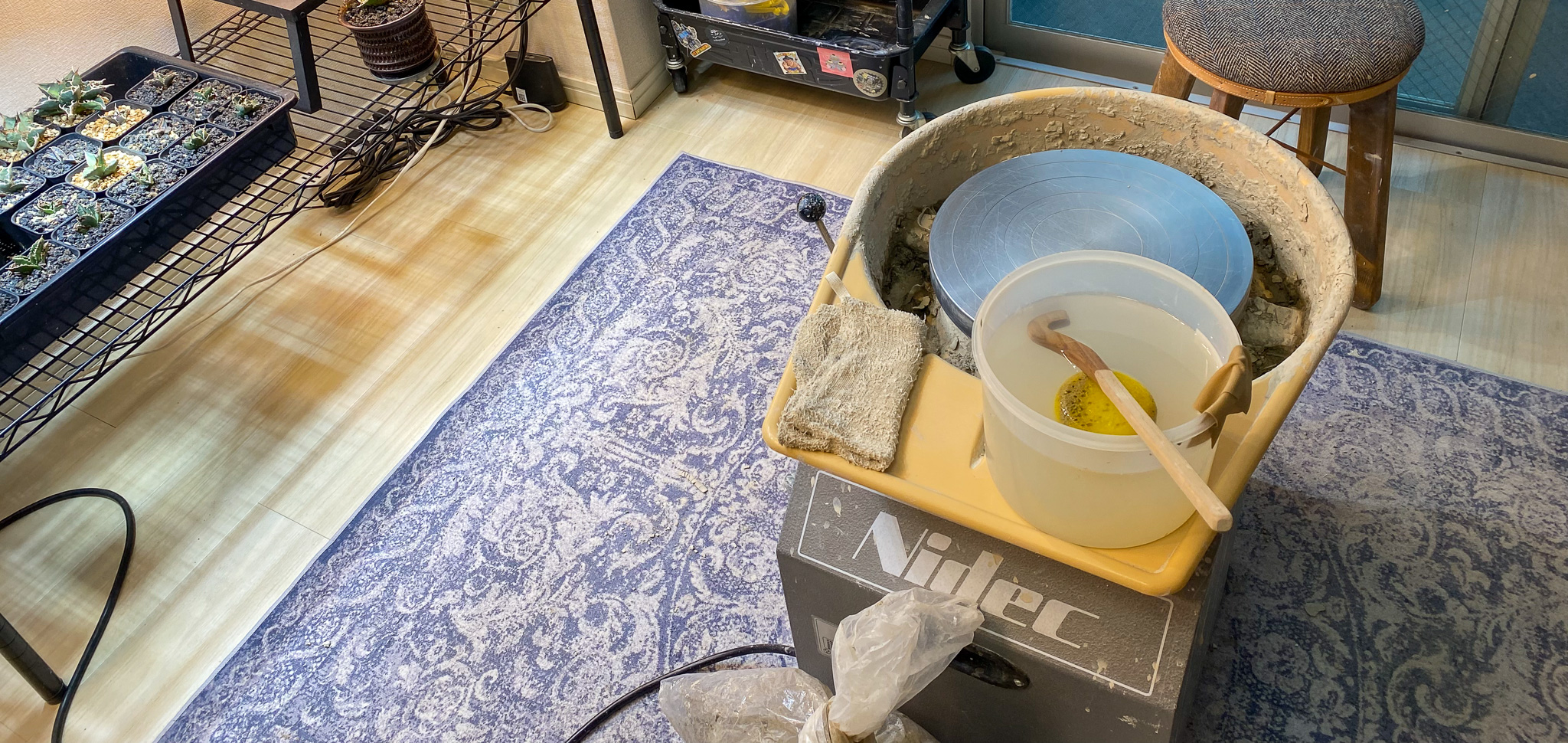
When I think of Kyobachi, I think of Instagram Live.
I continued to work as a professional succulent seller through Instagram, so when I started uploading stories about my ceramics, I was happy to receive several sales requests. Of course, I was still a beginner, and my works were not beautiful, the vessels were thick, and there was too little space to put the soil in, but I was really happy to receive requests to sell them, so I started taking orders. The orders piled up, and I was busy making pottery. Even though I was a beginner, I felt the discomfort of making pottery while feeling the pressure of orders, so I decided to stop taking new orders for the time being and create and save my works before selling them.
In December 2021, I held my first "Kyoubachi Live". For the first time, I sold the flower pots that I had made myself. Thanks to this, many customers purchased them. From then on, I held Kyobachi Live two to three times a month, usually starting at 7pm and spending two to two and a half hours selling 20 to 30 pots that I had made in an auction format. At most, about 70 people watch Kyobachi Live, with an average of about 40 people. Because it is an auction sale, the prices can sometimes go up, but I have the impression that viewers keep the prices reasonable.
We come up with various plans and put them into action. We give away Kyobachi stickers to purchasers, and sometimes give away Kyobachi cushions and flowerpots as gifts in a lottery exclusive to Live purchasers. People who grow agaves, succulents, and tuberous plants generally feel guilty about their families (laughs), so we import "Earth Gummy" from Korea and give them to people with children, or give them a wagyu beef set. We're still preparing Christmas gifts in the back.
This is not related to the volunteer work I mentioned earlier, but I want to give back to the customers who buy my work and bring smiles to their faces. Of course, I want to create works that are worthy of that. I've been able to make pottery with the support of my customers, so I want to get better and better, and that's why I make pottery in my own way! That feeling and the quality of the work have to match. But I'm really happy to be stress-free every day. And please come and see Kyobachi Live!
For information on Kyobachi Live, click here
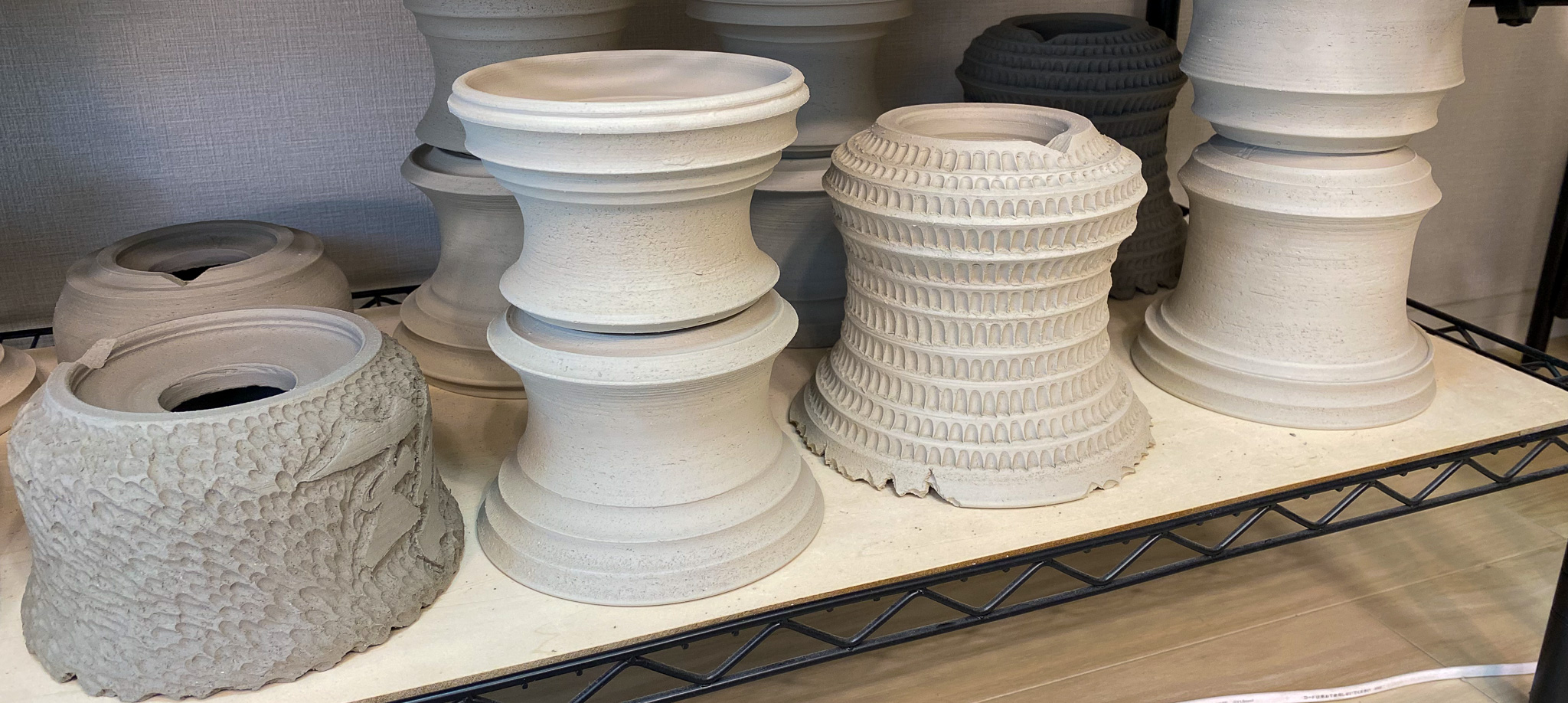
Please tell us about your masterpiece, "Babel"
While thinking about how I could use something in my flowerpot, I looked at many great buildings created by mankind in the past, such as the Colosseum and the Leaning Tower of Pisa. I'm not a Christian or anything, but when I saw the giant tower "Tower of Babel," it clicked! (The Tower of Babel is a giant tower depicted in the Book of Genesis in the Old Testament. The story goes that God, angry at mankind's pride, confused the language of the people and scattered them all over the world to prevent their completion.)
The many layers, the hanging windows, and the slope. I thought this would match well as a flowerpot, so I made it. I also delivered Babel to OMBLE.
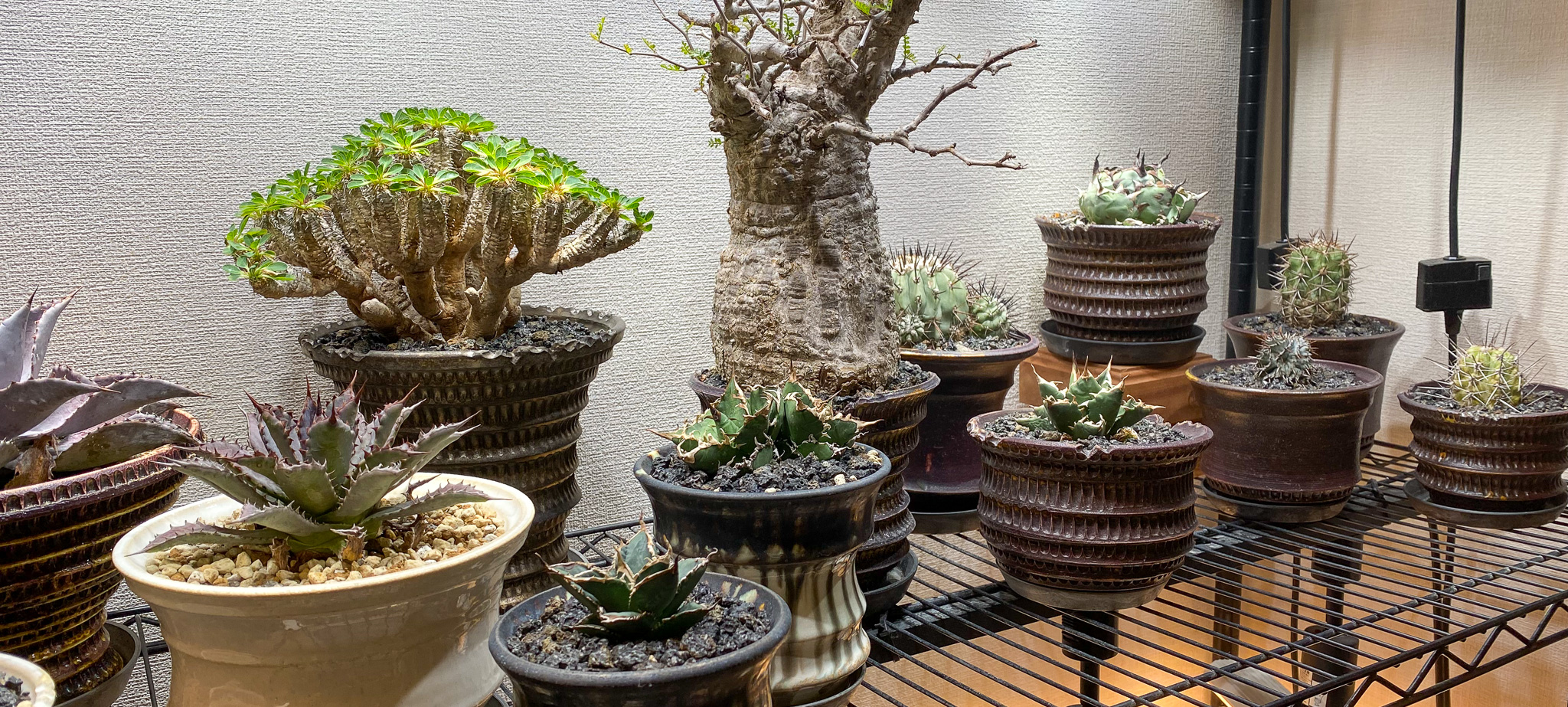
Please tell me the process of making Babel pottery.
I create my pottery in a room in an apartment with a great view in Shinsen, Shibuya, Tokyo.
I use two types of clay, black clay and white clay. I use different ones depending on the glaze. Since I don't have a clay kneader, I carefully knead it in the shape of a chrysanthemum.
The pottery making process is standard, shaping on an electric potter's wheel, drying, and carving. Babel is made up of multiple horizontal lanes and vertical ridges, so carve them in order from the bottom as they begin to dry. After carving as much as possible, the kneading process is started again while waiting for the pot to dry, and the pottery begins to shape. Once shaped, the body that was carved earlier begins to dry, so carve it again, create a foot, turn it over, carve off the lip, and the carving is complete.
Babel is extremely time-consuming; a typical one has around 10 layers, with 50 to 60 ridges per layer, so the total number is ridiculously large... When I'm creating Babel, I enter Babel mode and just concentrate on creating it.
For bisque firing, I use one of my two electric kilns. I turn it over twice a day, every 12 hours. After heating it up to 700°C, I open the door a little when it gets to about 500°C to let it cool, then I open it like a man when it gets to about 250°C (lol)! I immediately put the next piece I want to bisque in and press the switch.
The pots are then glazed. We currently offer six colors, including Yakishime. We use bronze, burgundy, gold metallic, white, and blue. We also use black, though on rare occasions. We apply the glaze by dipping it in a bucket or using a ladle.
The final firing is also done in an electric kiln. It depends on the size, but at most four pieces can be fired at once. It is heated to 1230℃, and when it drops to about 400℃, the door is opened to cool, and then it is opened like a man at 250℃! It is taken out, post-processed, and finished!
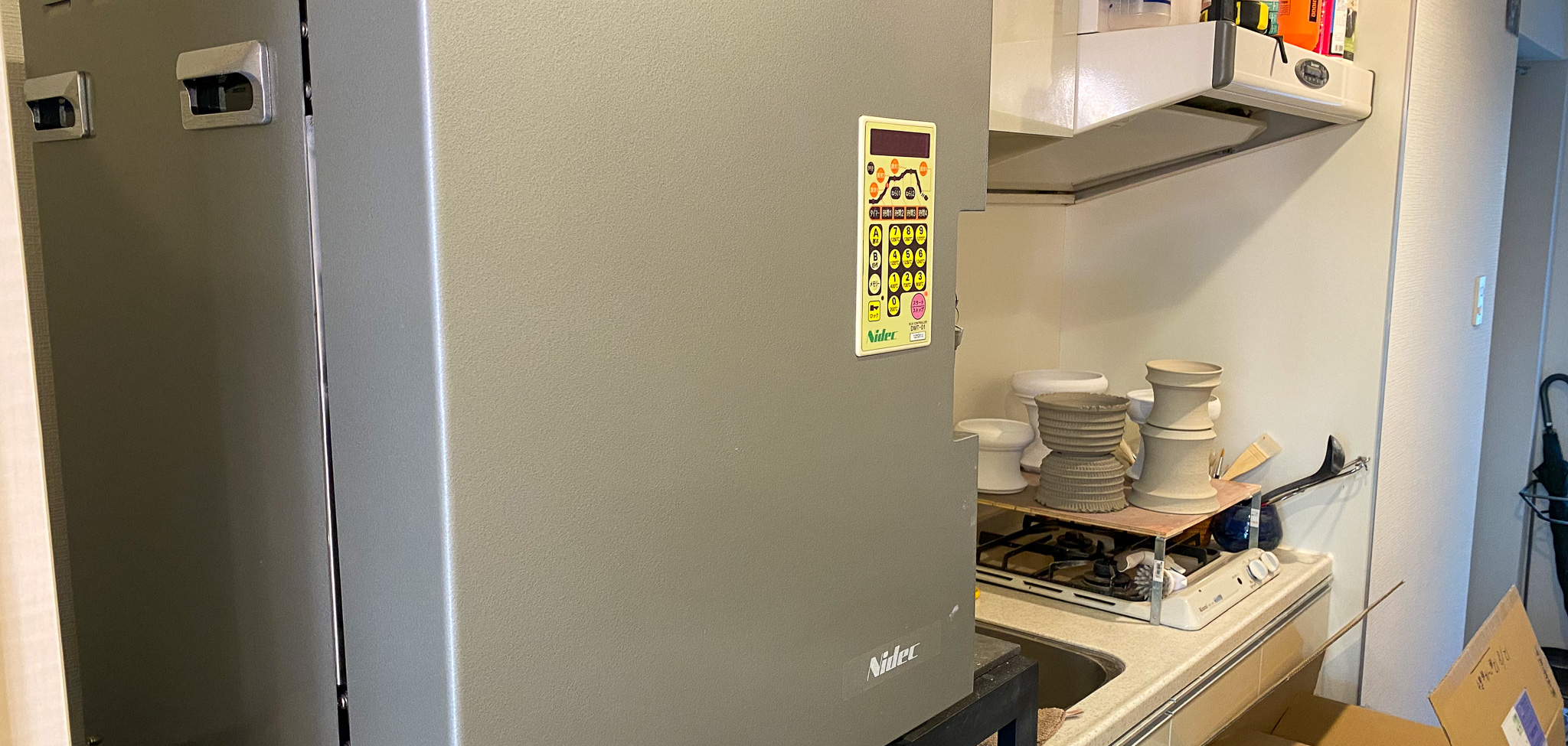
If you have any particular preferences for your mad bowl, please let me know.
I think it's the thickness. A pot that is too thick is no good, but I make sure there is enough space for the soil, and I shape it with the main premise of encouraging root growth throughout the year. I especially leave some soil at the bottom, but the roots spread out and grow downwards, so I make it a little thicker to prevent the bottom from getting too cold.
I also use these Kyoba pots to grow my collection, and many of my customers have told me that the roots have grown incredibly fast since they switched to Kyoba pots. I would encourage everyone to try growing them in both Kyoba pots and regular ceramic pots, so you can see the difference.
There is an image that if you simply make a cool pot, it will end up being just a decoration. In my case, I make my pots with the premise that the plants will grow well, so I am very particular about that aspect. However, since I was selling agave, I don't want people to only plant agave. I want people to plant their favorite plants, whether they are succulents or tuberous roots, in the pot.
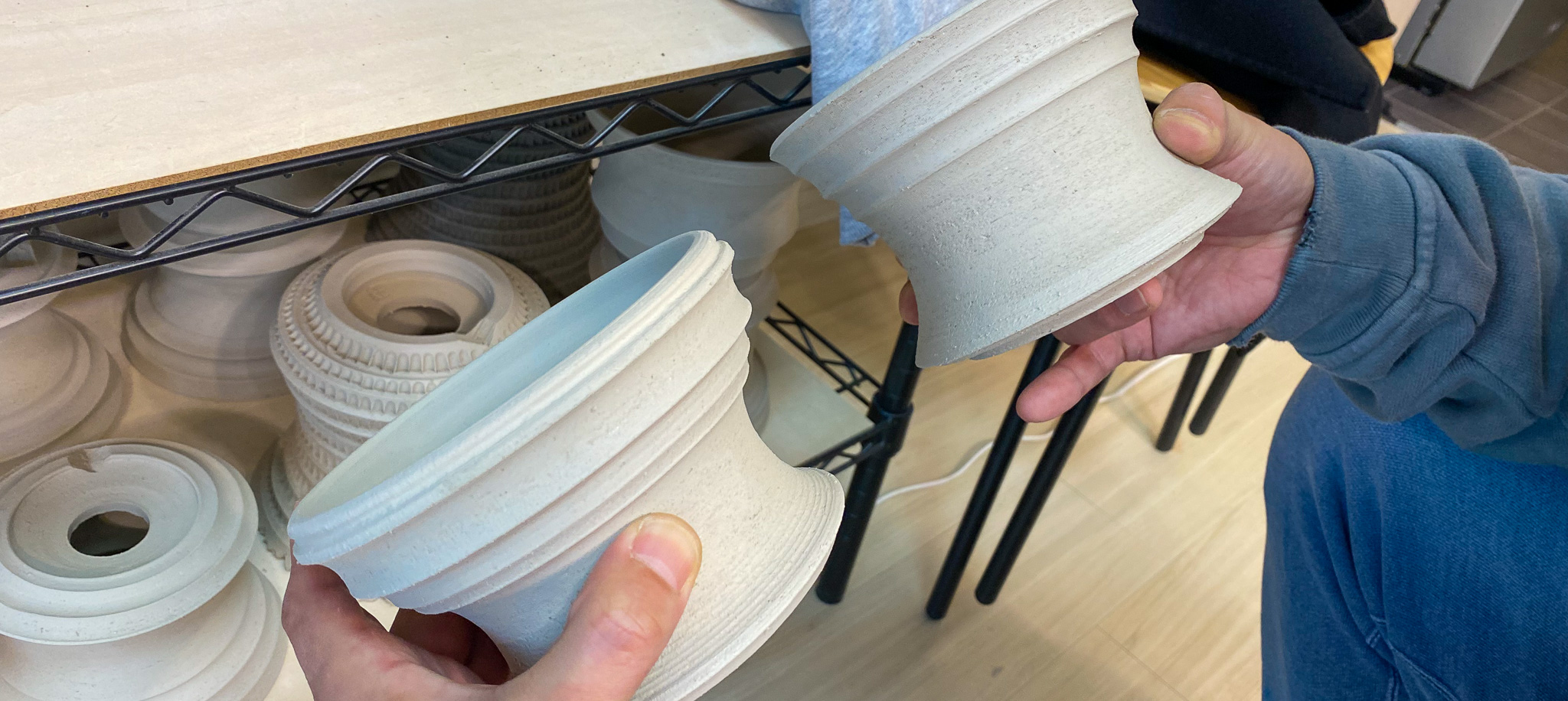
Lastly, please tell us your height, size, and special skills (lol)
170cm, 90kg (pretty big and muscular...), left hook (lol) He was also good at the right low kick.
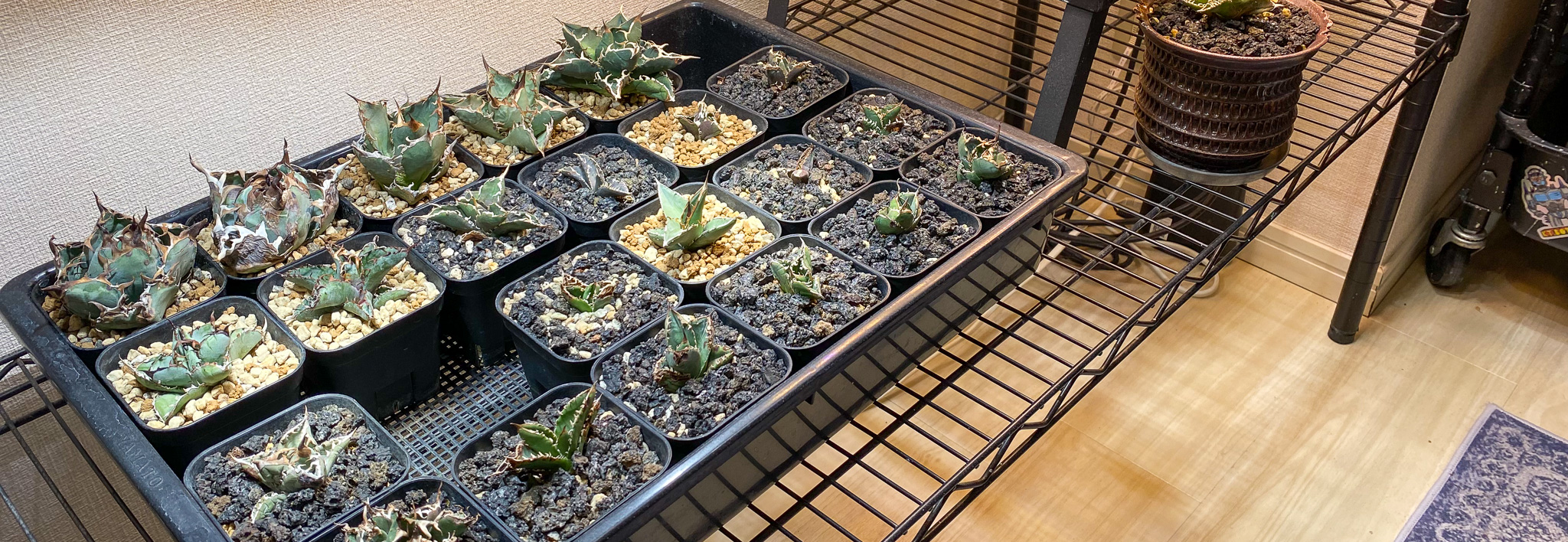
OMBLE: Thank you for reading to the end. Mad-san, you spoke clearly, carefully, and powerfully. We even had eel for lunch, and received a Kyobachi as a gift. To me, he is a kind person who perfectly fits the image of the new "too tough brother" in Shibuya. Please join the Kyobachi Live and use the Kyobachi to grow plants such as agave!
